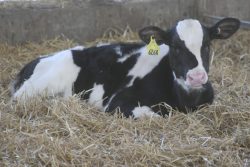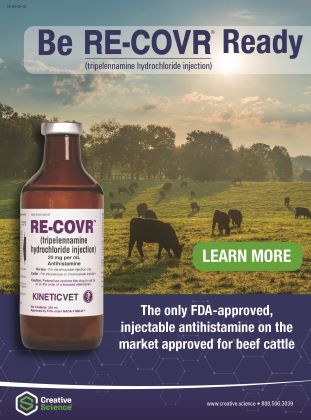When Abnormal Becomes Routine: How to Spot and Stop Bovine Respiratory Disease

Stay vigilant in your vaccination protocols and calf management to prevent BRD.
DULUTH, Ga. (December 5, 2024) — When you do the same task day after day, month after month, it’s easy to overlook the small signs of a bigger problem, especially when it comes to bovine respiratory disease (BRD).
“There’s so much subclinical respiratory disease, and we often don’t dig into what’s going on until the disease accelerates,” said Curt Vlietstra, DVM, Boehringer Ingelheim. “We learn to tolerate or become numb to a certain level of mild cough, a little nasal discharge, maybe some red, runny eyes. We accept that as normal when, by definition, those signs are definitely not normal.”
When we get busy doing other things, BRD can ramp up, affecting short-term and long-term animal performance. Productivity impacts of BRD include decreased rate of weight gain, higher culling risk, delayed age at first service, delayed age at first calving and, in some cases, lower future milk production.1
Don’t let respiratory disease sneak up on you. Use these three tips to stay proactive and keep your herd healthy:

1. Focus on prevention
It’s the little things that can make a big difference in BRD management. But, when we get busy, attention to detail can slip and important tasks can be overlooked, leading to an uptick in disease.
“Prevention is always preferable to treatment,” asserted Dr. Vlietstra. “But we know we can’t prevent all sickness. When we do have a disease outbreak, we’re often so focused on putting out fires that we aren’t able to put as much effort into prevention, leading to a cycle that’s difficult to get out of.”
Focus on nutrition, beginning with and including colostrum, air quality, providing a clean, dry environment, and reducing stress. Specific to vaccines, make sure you’re handling and administering modified-live virus vaccines appropriately to give them the best opportunity to do their job. Review disease challenges with your veterinarian to design protocols specific to your dairy. Conduct regular employee training and review procedures at least once a year to reduce protocol drift and improve compliance.
He added, “When calves do get sick, treat early and aggressively with a fast-acting, broad-spectrum treatment, but also look at what you can do to shift your attention back to improving preventive measures.”
2. Set and track goals
Good recordkeeping, setting goals and tracking benchmarks are important to prevent the abnormal from becoming normal. Without this data, you may not realize a small problem is becoming a bigger issue until it’s too late. Data allows you to be proactive, identify trends and make management adjustments early.
“Keep track of and look for trends in how many calves you treat each month, especially during the spring and fall when there can be drastic temperature and humidity fluctuations leading to more respiratory disease,” said Dr. Vlietstra. “If there’s an uptick in either the incidence or the severity of disease, that’s an indication you might need to make a change.”
Working with your veterinarian to perform diagnostics can give you a better idea of the specific pathogens involved in the disease outbreak. Swab calves with runny eyes or nasal discharge and have your veterinarian perform a lung ultrasound for calves with mild coughs.
“It’s not feasible to test every calf, but it’s a good idea to run diagnostics when there’s a significant change in the pattern of disease, or when you’re looking to make a protocol change,” he explained.
3. Give vaccines the best opportunity to succeed
There are only so many hours in the day, and when we’re busy or our focus is pulled elsewhere, we must accomplish important tasks, like vaccinating, when we can. However, it’s essential to consider the best timing for the calf, and not just our schedules.
“We should do what we can to vaccinate calves at a time when we think the vaccine is going to get a good response,” emphasized Dr. Vlietstra. “Avoid giving vaccines when you know calves are going to have some stress, like during bad weather or when you’re moving pens.”
It’s also important to vaccinate calves early to maximize immunity. However, maternal antibodies can impact the effectiveness of some vaccines, meaning many producers wait to vaccinate until calves are older and may already be susceptible.
Dr. Vlietstra suggests looking for a vaccine that’s proven to overcome maternal antibodies, allowing you to vaccinate calves early. “Vaccinating early allows calves to start building immunity before the stressful time of weaning,” he concluded.
By staying vigilant and recognizing that even small changes in your herd’s health are not normal, you can prevent bovine respiratory disease before it escalates.




